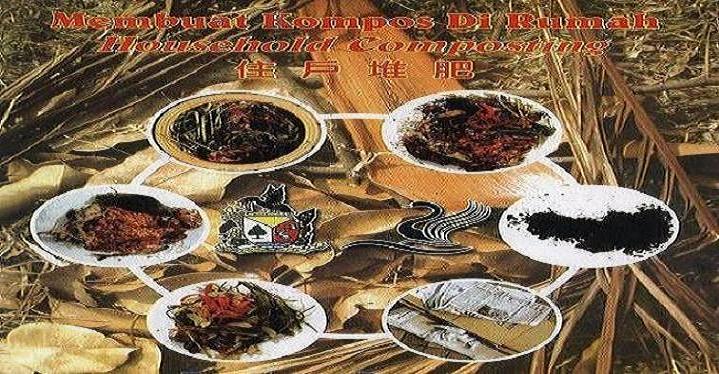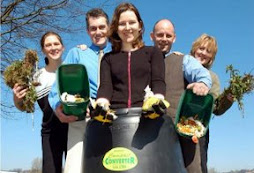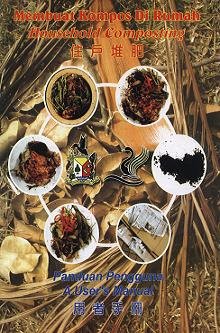
9. Vermicomposting (Composting With Worms)
Vermicomposting is a process of using worms to produce rich compost from kitchen wastes.
Vermicomposting is a good alternative if you live in an aprtment or if you generate mostly food scraps.
The best diet for your worms are food scraps that are of plant origin.
This includes vegwetables and fruit trimmings, coffee graounds, bread, cereal, tea bahgs and other paper products.
Animal products such as meat, eggs, cheese, etc are discouraged or best kept to a minimum to prevent odour.
Making A Worm Bin
Materials
- Plastic or stryrofoam containers with lid
- Window screen
- Duct tape
- Newspaper, shredded paper or paper-board
- Water
- A hand-full of sand or soil
- Electric drill with 1 inch spade bit
- 1/2 - 1 kg worms (2,000 - 4,000 worms)
Commercial worms that are commonly used for vermicomposting are Tiger Worms (Eisenia foetida), Malaysian Blueworm (Perionyx excavatus) and African Nightcrawlers (Eudritus eugeniae).
Worm Bin Construction
1. Drill holes either on the top or sides of container.
2. Drill at the bottom of the bin to ensure good drainage of "compost tea". a nutrient rich liquid which is a by-product of the decomposition process.
3. Collect this liquid to use as a foliar fertilizer or used as normal fertilizer.
4. Cut small pieces of screen to cover the holes and tape them to the inside of the bin using duct tape. This is to ensure that other vermins such as cockroaches, ants and other inscests do not enter the bin.

Bedding
1. Bedding is a very important aspect of vermicomposting.
2. Make the bedding by shredding paper lengthwise into 1 inch strips to fill the bin 1/3 full.
3. Spread sand or soil over the bedding.
4. Pour water over the newspaper strips; stirring the bedding as you moisten it.
5. Dump worms out of containers onto surface of the bedding.
Caring For The Worms
1. DFeeding: 1 kg of worms can process 1/2 kg of kitchen scraps a day. Feed them daily, weekly or as desired.
2. Cutting kitchen scraps into small pieces allows the worms to consume them faster.
3. Bury the scraps under the bedding; rotate where you bury them. You may add more bedding every once in a while.
4. Temperature: The ideal temperature for worms is between 15 - 26 C (60 - 80 F). Therefore, place the bin in a shady area but not under direct sunlight.
5. Moisture: Check the moisture when adding kitchen scraps. If too wet, add more bedding; if too dry, add water. Worms like moisture.
6. Darkness: Keep the lid on your bin. Worms do not like light and the colsed bin will not attract flies.
Harvesting
After 2 - 3 months, the worms will have digested the bedding and food scraps into a rich, dark compost. Thre are two ways to harvest it:
1. a. Push the compost to one side of the bin and fill the empty side with
moistened, shredded newspaper.
b. Place kitche scraps into bedding.
c. The worms will eventually leave the compost and migrate towards the food.
d. The compost can then be removed.
2. a. To harvest both the worms and the compost at the sme time, empty the contents
of the bin into a pieces of plastic sheet.
b. Allow the worms time to retreat to the middle of the pile away from the light,
then scrape off the outer layer of compost.
c. Repeat this process untill all the compost is harvested and mostly worms are
left.













No comments:
Post a Comment